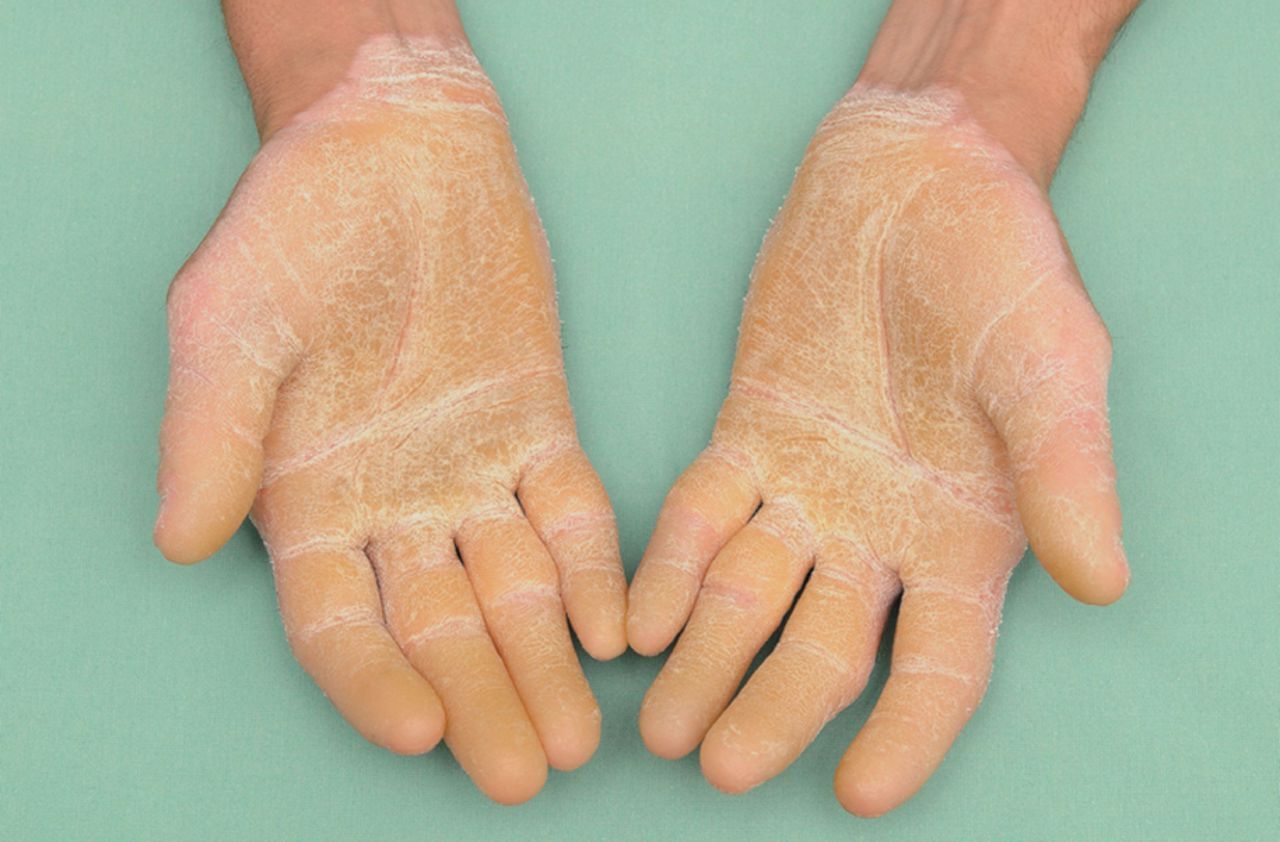
Epidermolytic Palmoplantar Keratoderma Vorner Type is a rare genetic skin disorder that affects the palms and soles. This condition causes thickening of the skin, leading to painful cracks and blisters. Inherited in an autosomal dominant pattern, it means one copy of the altered gene in each cell is enough to cause the disorder. Symptoms usually appear in early childhood and can worsen over time. Daily life can be challenging for those affected, as simple tasks like walking or gripping objects become painful. Understanding this condition is crucial for better management and support. Here are 30 facts to help you learn more about this rare disorder.
Key Takeaways:
- Epidermolytic Palmoplantar Keratoderma Vorner Type is a rare genetic skin disorder causing thickened skin and painful blisters on the palms and soles. It's inherited and diagnosed through genetic testing and can be managed with various treatments.
- Understanding the symptoms, diagnosis, and management of EPPK Vorner Type is crucial for affected individuals. Research is ongoing to develop more effective treatments, including gene therapy and new topical treatments targeting the genetic causes of the condition.
What is Epidermolytic Palmoplantar Keratoderma Vorner Type?
Epidermolytic Palmoplantar Keratoderma (EPPK) Vorner Type is a rare genetic skin disorder. It primarily affects the palms and soles, causing thickened skin and painful blisters. Understanding this condition can help those affected manage symptoms better.
- EPPK Vorner Type is inherited in an autosomal dominant manner, meaning one copy of the altered gene is enough to cause the disorder.
- The condition is caused by mutations in the KRT9 gene, which provides instructions for making keratin 9, a protein crucial for skin integrity.
- Symptoms usually appear in early childhood, often before the age of five.
- Thickened skin, known as hyperkeratosis, is the hallmark of EPPK Vorner Type.
- Blisters can form on the thickened skin, especially after minor trauma or friction.
- The thickened skin can crack, leading to painful fissures.
- EPPK Vorner Type affects both males and females equally.
- The severity of symptoms can vary widely, even among family members.
- The condition is also known as Vorner's disease, named after the German dermatologist who first described it.
- EPPK Vorner Type is one of several types of palmoplantar keratoderma, each with different genetic causes and symptoms.
Symptoms and Diagnosis
Recognizing the symptoms and getting a proper diagnosis is crucial for managing EPPK Vorner Type. Here are some key points about its symptoms and how it is diagnosed.
- Symptoms often worsen in winter due to dry skin.
- Excessive sweating, or hyperhidrosis, is common in affected areas.
- The thickened skin can have a yellowish or waxy appearance.
- Diagnosis is usually based on clinical examination and family history.
- Genetic testing can confirm the diagnosis by identifying mutations in the KRT9 gene.
- A skin biopsy may be performed to examine the structure of the skin under a microscope.
- Misdiagnosis is possible, as EPPK Vorner Type can resemble other skin conditions like psoriasis or eczema.
- Early diagnosis can help in managing symptoms and preventing complications.
Treatment and Management
While there is no cure for EPPK Vorner Type, various treatments can help manage the symptoms and improve quality of life.
- Emollients and moisturizers can help keep the skin hydrated and reduce cracking.
- Keratolytic agents, such as salicylic acid or urea, can help soften and remove thickened skin.
- Topical retinoids may be prescribed to promote skin cell turnover.
- In severe cases, oral retinoids like acitretin can be used, but they have significant side effects.
- Regular use of gloves and protective footwear can help prevent blisters and reduce friction.
- Antiperspirants may be used to manage excessive sweating.
- Pain management is important, especially for those with painful fissures or blisters.
- Physical therapy can help maintain mobility and function, especially in severe cases.
- Genetic counseling is recommended for affected individuals and their families.
- Support groups and online communities can provide emotional support and practical advice.
Research and Future Directions
Ongoing research aims to better understand EPPK Vorner Type and develop more effective treatments. Here are some exciting developments in this field.
- Researchers are exploring gene therapy as a potential treatment for genetic skin disorders like EPPK Vorner Type.
- New topical treatments are being developed to target the underlying genetic causes of the condition.
Final Thoughts on Epidermolytic Palmoplantar Keratoderma Vorner Type
Epidermolytic Palmoplantar Keratoderma Vorner Type, though rare, impacts many lives. Understanding its genetic roots and symptoms can help in managing this condition better. Early diagnosis and treatment are crucial for improving quality of life. Regular visits to dermatologists and genetic counselors can provide the necessary support and guidance. While there’s no cure yet, ongoing research offers hope for future advancements. Staying informed and connected with support groups can make a significant difference. Remember, knowledge is power. The more you know about EPPK Vorner Type, the better equipped you’ll be to handle its challenges. Keep learning, stay proactive, and support those affected by this condition.
Frequently Asked Questions
Was this page helpful?
Our commitment to delivering trustworthy and engaging content is at the heart of what we do. Each fact on our site is contributed by real users like you, bringing a wealth of diverse insights and information. To ensure the highest standards of accuracy and reliability, our dedicated editors meticulously review each submission. This process guarantees that the facts we share are not only fascinating but also credible. Trust in our commitment to quality and authenticity as you explore and learn with us.
